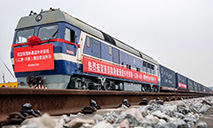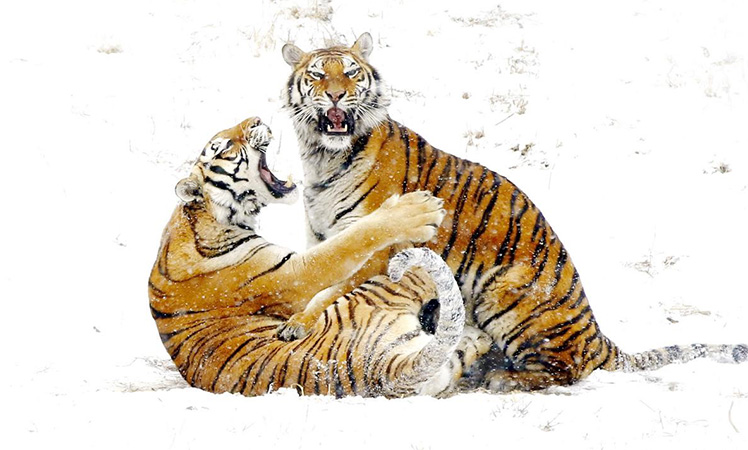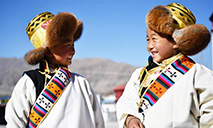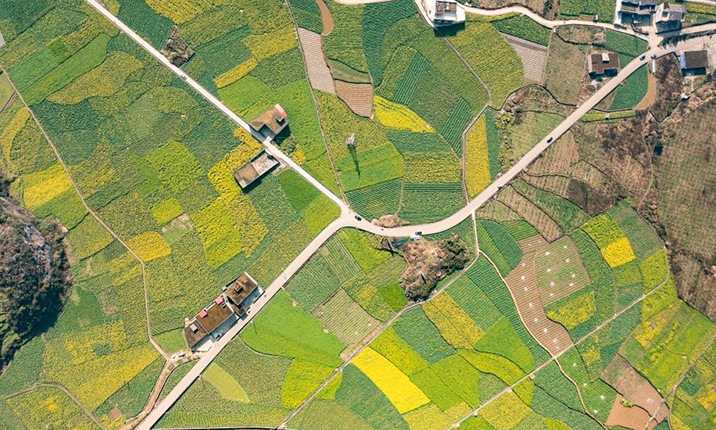Coasting on 2022 Games to year-round biz
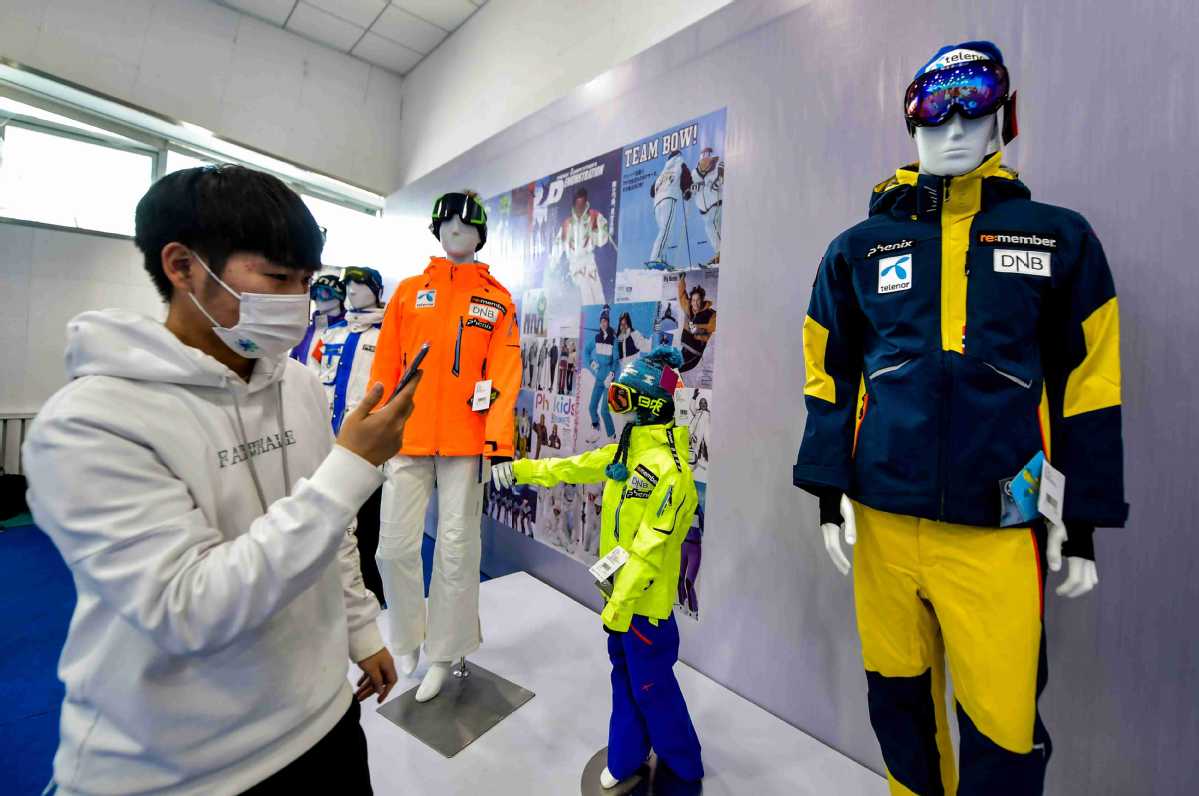
Stylish skiwear attracts a visitor at the 15th Xinjiang Winter Tourism Industry Trade Fair in Fuyun county, Altay prefecture of Xinjiang Uygur autonomous region, on Nov 27. [Photo/China News Service]
Snow sports, tours, consumption upgrade, new policies to spawn a huge market
Thanks to the momentum from the Beijing 2022 Winter Olympics in February, China is set to sustain the rapid growth of consumption of ice and snow sports-related products, services and experiences, which will likely spawn a multibillion-dollar industry, market insiders said.
The China Tourism Academy indicated as much in a report released a few weeks before the Games started, highlighting a potential total revenue of more than 1.1 trillion yuan ($174.07 billion) in China's ice and snow tourism sector and a consumer base of over 500 million by 2025.
This has predictably got market watchers very excited as they expect consumer enthusiasm to not only last several years but become a year-round phenomenon. What's more, given the sheer size of the consumer base in China, they see tremendous future prospects for growth that could arguably dwarf established markets such as Norway, Austria and Switzerland combined.
Pyeongchang, South Korea, held the Winter Olympic Games in 2018 and, according to the Korea Economic Research Institute, the Games helped create economic benefits worth $60 billion in the near term, with positive effects continuing to sustain and grow the ice and snow sports industry and related sectors like hospitality, tourism, health and wellness.
Unsurprisingly, some regions in China are actively developing their ice and snow gear manufacturing sector. For instance, the local governments of Hebei, Heilongjiang and Shandong provinces have proposed plans to establish skiing gear manufacturing industrial parks and thus further integrate advanced technological resources.
In late February, eight central government departments, including the Ministry of Finance, the National Development and Reform Commission, and the Ministry of Industry and Information Technology, announced that China will optimize and adjust the list of imported goods for cross-border e-commerce retail from March 1, adding 29 new goods categories and removing one. The added goods include skiing gear, which has seen strong demand in recent years.
"The measure is expected to further stimulate consumption in the skiing sector. Besides, a number of provinces and cities are developing ice and snow tourism as a key industry, and related travel services and facilities are being improved," said Zhang Weilin, an analyst at the LeadLeo Research Institute, a market research provider.
"The successful holding of the Beijing Winter Games has further driven the growth of the ice and snow travel sector in China, and an increasing number of people are showing interest in the sports and going on skiing trips. Related favorable policies are foreseen further stimulating ice and snow consumption," Zhang said.
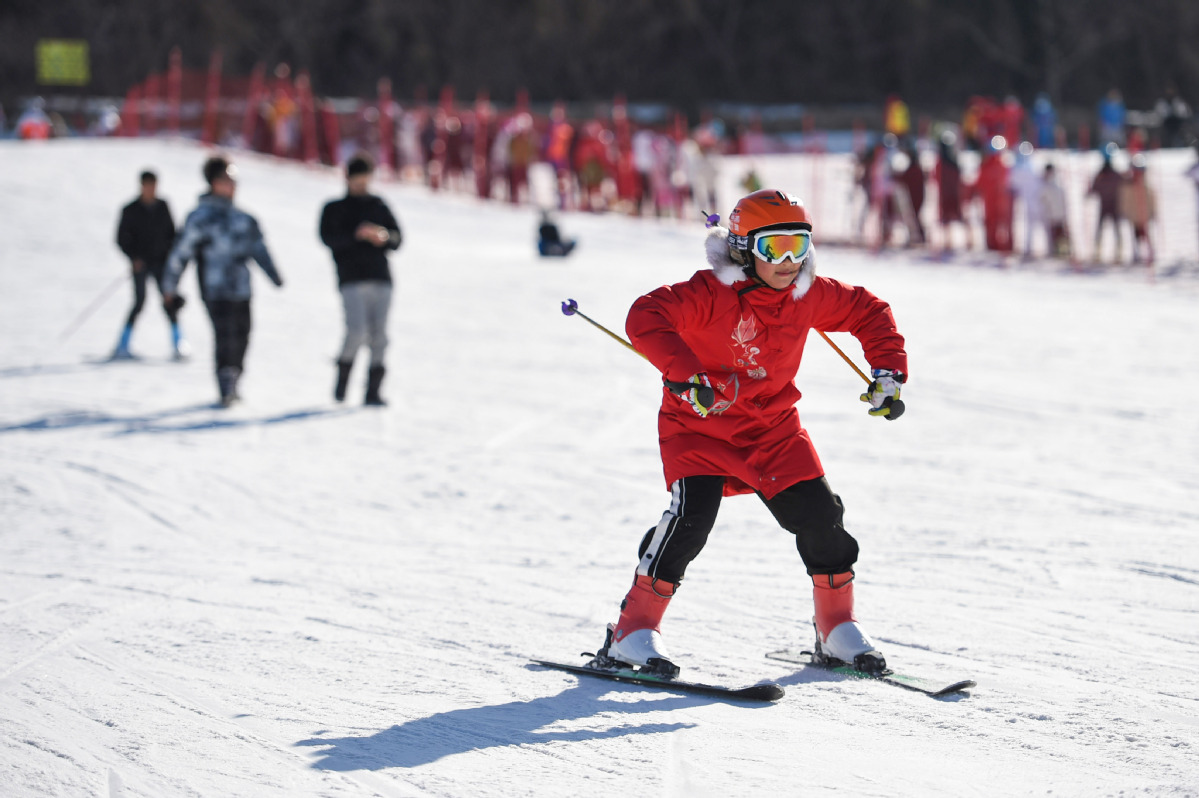
A child (right) practices skiing at Tuoshan Ski Resort in Qingzhou, Shandong province, on Feb 19. A growing number of Chinese people are showing interest in skiing. WANG JILIN/FOR CHINA DAILY
By the end of October, more than 346 million people in China had participated in winter sports since Beijing won its bid in 2015 for the 2022 Winter Games, according to the National Bureau of Statistics. Tu Xiaodong, an official from the General Administration of Sport, described it as "the most significant legacy".
The consumption upgrade trend is expected to contribute to the recovery of the Chinese economy. As part of their economic planning for 2022, China's local governments have plans to promote sustained recovery of consumption.
"With the increase of residents' income and relatively stable control of the COVID-19 pandemic in China, this year's consumption growth rate is expected to return to the pre-pandemic level. The nominal growth rate of consumption is expected to reach about 8 percent, and the actual growth rate is foreseen to be about 5 percent to 6 percent," said Zhu Haibin, JPMorgan's chief China economist.
Deng Ning, a professor at Beijing International Studies University, said driven by the popularity of medal-winning sports stars, some ice and snow sports have become the new favorite for many middle-income families and a way for parents to educate their children for all-around development over and above regular academic activities.
"Online travel agencies and ice and snow sightseeing spots can cooperate to launch more study tours integrated with ice and snow sports. Such new marketing strategies can drive the development of multiple sectors like hospitality, education, sports and tourism," Deng said.
Between Feb 7 and Feb 13, the week after the Spring Festival, booking volumes of hotels near skiing venues nationwide jumped 40 percent over the volumes seen during the festival, and sales of admission tickets of skiing venues increased by 36 percent. Among travelers, nearly half of the total were families that took their children to go skiing before the start of the new semester, according to Fliggy, Alibaba Group's travel branch.
During the week after the Spring Festival break, the number of travelers who were born after 2000 and went on ice and snow trips, as well as the number of people who went skiing with their children, both jumped more than 50 percent year-on-year. Many skiing winter camps nationwide were fully booked, Fliggy found.
"During the week of the Spring Festival break and the week after the holiday, the occupancy rate of our resort and the passenger flow of the skiing venue both doubled compared with the same period of last year," said Wang Dandan, sales director of Beidahu Ski Resort in Jilin province in Northeast China.
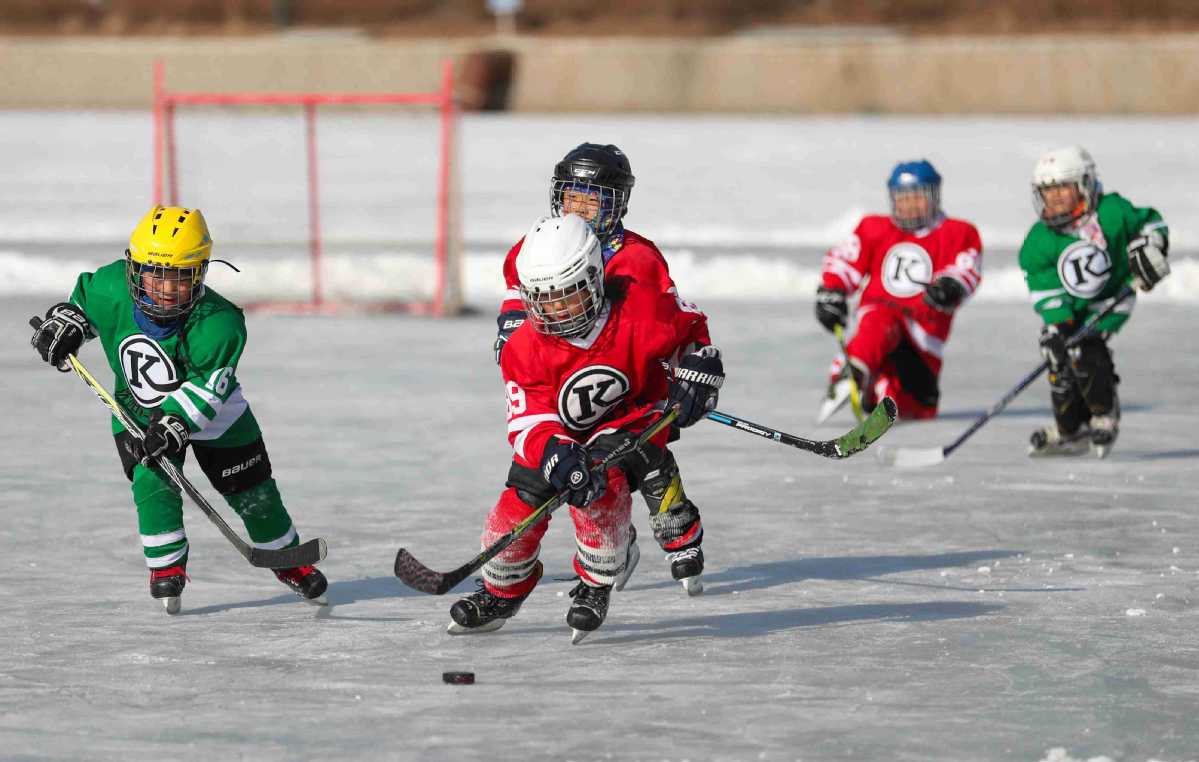
Children train in ice hockey at a park in Shenyang, Liaoning province, on Feb 16. China is seeing rapid consumption growth in the ice and snow sports industry. [Photo/China News Service]
"For the skiing season this year, we have designed multiple kinds of hotels and skiing packages. Those packages are designed to target different kinds of travelers, such as those who come from nearby regions or from somewhere farther, as well as people who travel with their families or friends," Wang said.
Wang also said with an increasing number of people who bring their kids to go skiing, the resort has designed various kid-friendly activities such as handicraft classes and some fun events involving snow.
Ren Changyu, online sales director of Park Hyatt Changbaishan and Hyatt Regency Changbaishan in Jilin province, said in the week after the Spring Festival, the occupancy rates of the two hotels saw a significant increase over the same period of last year. With a growing number of fans for ice and snow activities, the rebooking rates of the hotels also went up.
Beijing, Harbin in Heilongjiang province and Baishan in Jilin province topped the list of most popular destinations for ice and snow tours after the Spring Festival break. Besides, cities located in the southern part of China have gained in popularity with their indoor skiing facilities. In this context, Guangzhou in Guangdong province, Chengdu in Sichuan province, Chongqing municipality, and Huzhou in Zhejiang province lead, Fliggy found.
"The ice and snow tourism craze generated by the Winter Olympics is an opportunity for business retailers to grab more passengers and build better brand reputations," said Zhang Rong, vice-president of Fliggy.
Meanwhile, the number of small towns that feature ice and snow tourism is expected to increase in China. Such distinctive small towns usually integrate different types of operations like ice and snow sports, resorts and entertainment. The development of small towns that feature ice and snow sports is bound to promote China's ice and snow tourism industry and further drive consumption of ice and snow activities.
"With Chinese consumers' growing disposable income, the consumption upgrade trend has continued. Travelers, especially young consumers like Generation Z-people born between the mid-1990s and the early 2010s-have put more emphasis on their experiences during travel and are willing to try new things and challenge themselves. Ice and snow tours fit with such a mindset," Zhang of LeadLeo said.
Photos
Related Stories
- China pockets four golds on Day 2 of Beijing Winter Paralympics
- IPC expert praises accessible facilities at Beijing Paralympic Winter Games
- China records 1st wheelchair curling victory at Beijing 2022
- Wheelchair Curling Round Robin: Estonia vs. China
- Zhang Mengqiu wins China's first Alpine skiing gold at 2022 Winter Paralympics
Copyright © 2022 People's Daily Online. All Rights Reserved.







